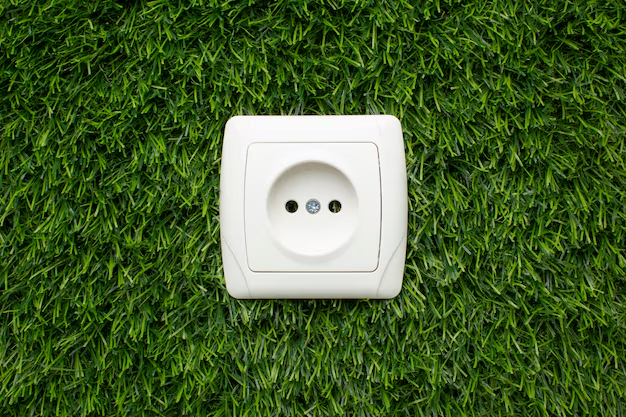What Does a Refrigerator Plug Look Like? A Comprehensive Guide for the Curious
When you think about a refrigerator, your mind probably wanders to its cooling capacity, its shelves, or maybe even the snack you're about to grab. But have you ever stopped to wonder what powers this hardworking appliance, specifically the plug that connects it to your home’s electricity source? Understanding what a refrigerator plug looks like, its components, and how it functions can be surprisingly fascinating and practical. Whether you're shopping for a new fridge or troubleshooting an electrical issue, knowing these details can come in handy. Let’s delve into the unseen yet crucial role that refrigerator plugs play.
Understanding the Basics: Anatomy of a Refrigerator Plug
When unboxing a new refrigerator, the plug might not catch your attention immediately. However, this component is vital because it dictates how electricity travels from your wall outlet to your appliance. Here's a simple breakdown of what most residential refrigerator plugs look like:
Three-Prong Configuration
In many regions, most refrigerators are equipped with a three-prong plug, often referred to as a grounded plug. This configuration typically consists of:
- Two flat parallel blades: These conduct electricity, connecting your appliance to the live and neutral wires of your electrical system.
- One round prong: Acting as the ground, it’s a safety feature designed to protect the appliance and its users from electrical faults by directing excess electricity away from the appliance.
Materials Used
Most refrigerator plugs are crafted from durable, heat-resistant materials to prevent overheating. The outer casing is often made from heavy-duty plastic, while the prongs themselves are metal, usually copper or a copper alloy to ensure efficient conductivity.
Length and Flexibility
The cords attached to refrigerator plugs vary in length and are typically designed to be flexible for easy maneuvering. Standard lengths range from 4 to 6 feet, enabling the appliance to be positioned at a convenient distance from the outlet without undue tension on the cord.
Plug Types and Electrical Requirements
Not all refrigerators are created equal, and neither are their plugs. Understanding the types of plugs and their requirements is instrumental in setting up your fridge safely.
Standard vs. Specialty Plugs
While most domestic refrigerators use a standard three-prong plug, some larger or older models may come with specialty plugs requiring different outlet configurations:
- Four-prong plugs: Often found in larger appliances or those with additional features, requiring higher electrical capacity.
- European plugs: In countries outside North America, a variety of plug types and voltages are used. Adapters or converters may be necessary for compatibility.
Electrical Ratings
Refrigerator plugs are designed to handle specific electrical loads. It’s essential to ensure your outlet matches these requirements:
- Voltage: Typically, domestic refrigerators require a 110-120 volt outlet. However, larger or industrial models may require a higher voltage.
- Amperage: Most household units operate on a circuit rated for 15 to 20 amps. It’s crucial not to overload the circuit to prevent tripping or electrical fire hazards.
Proper Installation and Placement
Ensuring your refrigerator’s plug is correctly installed and maintained is crucial for optimal performance and safety.
Steps for Safe Installation
- Check the Outlet: Ensure your outlet is grounded and suitable for your refrigerator’s plug type.
- Avoid Overloading: Do not share the outlet with other high-power appliances.
- Cord Management: Position the cord to prevent pinching or damage. Avoid running it under heavy carpets or through doorways.
Placement Considerations
- Accessibility: Ensure the plug is easily accessible for emergencies.
- Space Around the Fridge: Leave enough space around the appliance for airflow to prevent overheating.
Troubleshooting Common Plug Issues
Even with meticulous set-up, sometimes problems arise. Here are a few common issues and potential solutions:
Plug Overheating
- Causes: Overloading the circuit, poor contact points, or damaged cords.
- Solutions: Unplug, check for damage, ensure the outlet matches the refrigerator’s electrical requirements, and consult a professional if necessary.
Tripped Circuit Breakers
- Causes: Typically occur when the refrigerator draws more amps than the circuit can handle.
- Solutions: Consider moving the fridge to a dedicated circuit or upgrade the outlet's amp rating if compatible with safe electrical practices.
Damaged Prongs or Cords
- Indicators: Frayed cords or bent prongs can result in inefficient electricity flow or even pose safety risks.
- Solutions: Replace damaged parts promptly and avoid quick fixes like tape, which can lead to more significant issues.
Conclusion Insights: The Unsung Importance of a Simple Plug
While the refrigerator plug might appear minor within the grander scheme of your appliance, it’s pivotal for your refrigerator’s functionality and safety. Understanding its configuration, requirements, and potential issues empowers homeowners to ensure their appliances run smoothly and safely. Next time you’re shuffling the appliance or setting up a new fridge, remember the importance of how it connects to your world — literally and figuratively!
Summary Table: Quick Tips and Key Takeaways 🗒️
| Topic | Key Takeaways |
|---|---|
| Plug Configuration | Most use a three-prong design for safety and grounding purposes. |
| Materials | Heat-resistant casings with metal prongs ensure durability. |
| Types & Requirements | Match plug types with outlet capacity for efficiency. |
| Safe Installation | Ensure grounded and accessible outlets, manage cords strategically. |
| Common Issues | Address overheating, tripped breakers, and damage promptly. |
Key Reminders:
- 🔌 Use the right outlet: Ensure voltage and amperage compatibility.
- 👷♂️ Safety first: Promptly address cord damage or overheating issues.
- 🏠 Keep it accessible: Arrange things so unplugging in emergencies is straightforward.
By understanding these elements, you can better appreciate and ensure the smooth operation of this essential household appliance, emphasizing the importance of often overlooked components in our everyday conveniences.
